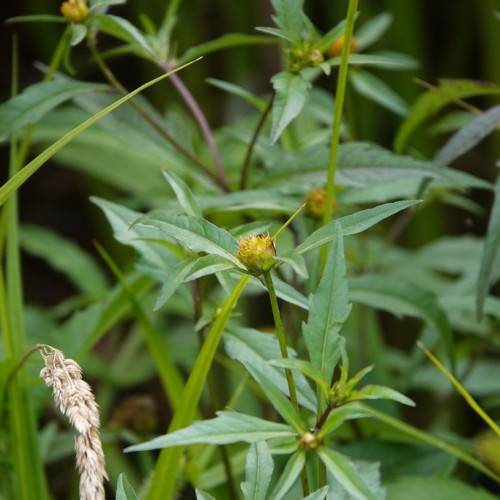
Purple Stem Swamp Beggar Ticks
Bidens connata
Watering:
Minimal
Hardiness Zone:
Sun:
full sun,part shade
Growth Rate:
Low
Drought Tolerant:
Yes
Salt Tolerant:
Yes
Thorny:
Yes
Invasive:
Yes
watering
Spanish Needles prefer moist soils, but they are surprisingly drought tolerant once established. Water the plant at least twice a week during its first growing season. Make sure to water the soil until it’s fully moist. As plants become established, they will need less frequent watering. It’s important to make sure the soil never dries out completely. During summer, Spanish Needles should be watered once every week or 2. In winter, the plants should be watered on an as-needed basis.
sunlight
Spanish Needles (Bidens bipinnata) should ideally receive at least 6 hours of direct sunlight every day in order to thrive. If grown in a shaded area, it will not grow as large, have as many flowers, or have as much foliage. Too much direct sunlight, especially during the heat of the day, can cause the plant to become dry and will cause its leaves to yellow and drop off. It is best to keep this plant in a spot that has morning sun, but is shaded in the late afternoon.
pruning
Spanish Needles should be pruned when they start to look overgrown or before they start to set flowers, typically in mid-spring. Prune the plant back to about 1-third of its size by cutting back stems that have become leggy or woody. Remove all dead or damaged branches. Pruning will help keep Spanish Needles looking tidy and promote new growth.
